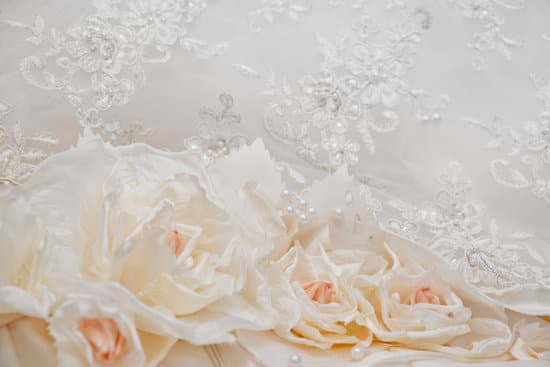Weddings are steeped in traditions and superstitions that have been passed down through generations, each with its own meaning and significance. One such debated topic is whether pearls are bad luck for weddings. The belief that pearls bring misfortune on a bride’s special day has sparked curiosity and skepticism among many couples embarking on their journey to matrimony.
Throughout history, pearls have been a symbol of wealth, beauty, and purity, making them a popular choice for bridal attire. From ancient civilizations to modern-day ceremonies, pearls have adorned brides with their lustrous charm. However, the question remains: do these beautiful gems hold the power to bring bad luck on such a joyous occasion?
As we delve into the history of pearls in weddings and explore the symbolism of these precious gemstones in different cultures, it becomes evident that perceptions vary widely. While some view pearls as a token of good fortune and love, others caution against wearing them due to superstitions surrounding their alleged negative energy. Join us as we debunk common myths about pearls and provide insights into alternative jewelry options for brides seeking luck without compromising style.
The History of Pearls in Weddings
Early Uses of Pearls in Weddings
Historically, pearls have been a symbol of beauty, purity, and wealth, making them a popular choice for brides across various cultures. The use of pearls in weddings dates back centuries, with ancient civilizations like the Greeks and Romans considering pearls as precious gems fit for royalty.
In many cases, pearls were believed to bring good luck and protection to the wearer, particularly brides on their wedding day. The luminous glow of pearls was thought to enhance the bride’s natural radiance and serve as a talisman against evil spirits.
Pearls in Bridal Attire Throughout the Ages
During the Victorian era, pearls became synonymous with bridal fashion, as Queen Victoria herself wore a strand of pearls on her wedding day in 1840. This iconic moment solidified pearls as a staple in Western bridal attire, symbolizing purity and innocence. In Eastern cultures like Japan and China, pearls have also held significant symbolism in weddings, representing harmony, wisdom, and prosperity. Brides often adorned themselves with delicate pearl jewelry to honor tradition and bring blessings upon their marriage.
The Evolution of Pearl Wedding Jewelry
As time progressed, the use of pearls in weddings expanded beyond just necklaces and earrings. Brides began incorporating pearls into their hair accessories, veils, bouquets, and even gown embellishments. The versatility of pearls allowed brides to personalize their wedding look while still embracing timeless elegance.
Despite misconceptions about pearls being bad luck for weddings in some regions or beliefs systems. many modern brides continue to choose pearl jewelry for its classic appeal and sentimental value without fear of any ill omens on their special day.
The allure of pearls continues to endure through generations of brides around the world. As trends evolve within the realm of bridal fashion, one thing remains constant – the timeless beauty and significance of pearls on wedding days are truly everlasting.
Symbolism of Pearls in Different Cultures
European Culture
In many European cultures, pearls are seen as a symbol of purity and innocence, making them a popular choice for brides on their wedding day. The smooth, round shape of pearls is often associated with the moon and its calming influence.
Pearls have been incorporated into bridal attire for centuries, adding a touch of elegance and sophistication to the overall look. While some believe that wearing pearls on your wedding day can bring good luck, others worry about the superstition surrounding pearls and their potential to bring bad luck.
Eastern Culture
In contrast to Western beliefs, some Eastern cultures view pearls in a different light. In countries like China and Japan, pearls are thought to represent tears or sadness. This association stems from the belief that pearls are formed when an oyster cries.
As a result, wearing pearls on your wedding day may be frowned upon in these cultures due to the negative connotations attached to them. While these superstitions may vary from one region to another, it is essential for brides to understand the cultural significance of certain jewelry choices before incorporating them into their weddings.
Native American Culture
Among Native American tribes, pearls hold special meaning and symbolism. In some communities, pearls are believed to bring protection and prosperity to those who wear them. They are often used in traditional ceremonies and rituals as symbols of wisdom and spiritual guidance.
For Native American brides, wearing pearls on their wedding day can be a way to honor their heritage and connect with their ancestors. Despite differing cultural perspectives on pearls, it is important for individuals to embrace their unique traditions while also respecting the beliefs of others when it comes to choosing bridal accessories.
Misconceptions About Pearls Being Bad Luck
Pearls have long been associated with weddings, symbolizing purity, innocence, and beauty. However, there has been a prevailing belief in certain cultures that pearls bring bad luck to brides when worn on their wedding day. This superstition has led many to question whether pearls are truly jinxed accessories or if it’s just a misconception that has been perpetuated over time. So, are pearls bad luck for weddings?
Despite the superstitions surrounding pearls and weddings, it’s essential to remember that these beliefs vary from culture to culture. While some view pearls as symbols of misfortune, others see them as tokens of good luck and prosperity. In fact, in many Asian traditions, pearls are believed to bring wealth and protection to the wearer, making them a highly favored choice for bridal jewelry.
Debunking the common myths and misunderstandings about pearls being bad luck requires shedding light on the cultural origins of these superstitions. By understanding where these beliefs stem from, brides can make informed decisions about whether or not they want to incorporate pearls into their wedding attire. It’s crucial for individuals to embrace their own customs and beliefs when it comes to selecting jewelry for their special day, rather than solely relying on age-old superstitions.
| Pearls in Different Cultures | Perception |
|---|---|
| Asian traditions | Believed to bring wealth and protection |
| Western customs | Some view pearls as symbols of misfortune |
Alternatives to Wearing Pearls for Brides
Pearls have long been associated with weddings and bridal attire, symbolizing purity, innocence, and timeless beauty. However, there are some superstitions surrounding pearls that may cause concern for brides-to-be. One of the most common myths is that pearls are bad luck for weddings. This belief likely stems from the idea that pearls represent tears and can bring sorrow to the marriage. Despite this misconception, many brides still choose to incorporate pearls into their wedding day look.
For those who are concerned about the superstitions related to wearing pearls on their wedding day, there are plenty of alternative jewelry options to consider. From sparkling diamonds to colorful gemstones like sapphires or emeralds, brides have a wide range of choices when it comes to accessorizing their bridal ensemble. Choosing a piece of jewelry with personal significance or sentimental value can also be a meaningful alternative to wearing pearls.
While some may choose to forego pearls altogether in order to avoid any potential bad luck, others believe that wearing pearls on their wedding day can bring good fortune and blessings to their marriage. Real-life stories of brides who wore pearls on their special day often showcase positive outcomes and happy marriages. Ultimately, whether or not pearls are bad luck for weddings is a matter of personal belief and interpretation.
| Alternatives Jewelry Options | Recommended Options |
|---|---|
| Diamonds | A classic choice symbolizing eternal love |
| Gemstones (Sapphires, Emeralds) | Add a pop of color while still looking elegant |
| Personalized/Sentimental Jewelry | Create a unique touch by incorporating pieces with sentimental value |
Stories of Brides Who Wore Pearls on Their Wedding Day
When it comes to wedding traditions and superstitions, there is a myriad of beliefs that have been passed down through generations. One such belief revolves around the idea that pearls are bad luck for weddings. Despite this superstition, many brides have chosen to defy the notion and incorporate pearls into their bridal attire. These real-life experiences shed light on how brides who wore pearls on their wedding day fared in terms of luck and love.
Here are some stories of brides who decided to embrace pearls on their special day:
- Emily, a bride from New York, wore a stunning pearl necklace that had been passed down through her family for generations. Despite warnings from her relatives about the bad luck associated with pearls, Emily felt a strong connection to the tradition and decided to wear the necklace. Surprisingly, she found herself surrounded by love and positivity throughout her wedding day.
- Samantha opted for pearl earrings as her “something blue,” believing that the superstitions surrounding pearls were simply old wives’ tales. She felt confident and beautiful wearing her chosen accessories, and was delighted when guests complimented her on her elegant choice.
- For Amanda, wearing a pearl bracelet was a nod to her grandmother, who had always believed in the protective powers of pearls. Amanda’s wedding day was filled with joy and laughter, and she attributes part of this happiness to the sentimental value of her grandmother’s cherished jewelry.
These stories serve as a reminder that ultimately, the significance we give to objects like pearls is personal and subjective. While some may choose to heed traditional superstitions, others find comfort in embracing meaningful symbols on their wedding day regardless of whether are pearls bad luck for weddings or not.
Tips for Incorporating Pearls Into a Wedding Without Superstition
Pearls have been a staple in bridal fashion for centuries, adding a touch of elegance and sophistication to wedding attire. However, some superstitions suggest that pearls may bring bad luck to the bride on her big day.
Despite these beliefs, many brides still wish to incorporate pearls into their wedding look. If you are one of those brides who want to include pearls in their ensemble without inviting any ill fate, here are some practical tips for incorporating pearls into your wedding without superstition:
- Consider wearing vintage or heirloom pearls: Vintage pearls have a rich history and may carry positive energy from past generations. Wearing heirloom pearls handed down from your family can also add sentimental value to your bridal ensemble.
- Pair pearls with other gemstones: To offset any negative energy associated with pearls, consider mixing them with other gemstones known for their positive properties. For example, pairing pearls with diamonds for purity or sapphires for love can enhance the overall symbolism of your jewelry.
- Cleanse and bless your pearls before the wedding: To clear any negative energy that may be attached to the pearls, consider cleansing them with saltwater or smoke from sage before wearing them on your wedding day. You can also bless the pearls with positive intentions or prayers for good luck.
By following these tips, brides can incorporate pearls into their wedding attire without fearing any bad luck. Remember that ultimately, what matters most is how you feel on your special day. If wearing pearls brings you joy and confidence, then go ahead and rock those lustrous gems with pride on your wedding day.
Conclusion
In conclusion, the debate surrounding whether pearls are bad luck for weddings is deeply rooted in historical traditions and cultural superstitions. While some may believe that wearing pearls on your wedding day can bring misfortune, it is essential to remember that these beliefs vary across different cultures and time periods. The history of pearls in weddings dates back centuries, symbolizing purity, love, and wealth in many societies.
Despite the myths and misconceptions about pearls being bad luck for weddings, it is important for brides to embrace their own traditions and beliefs when it comes to choosing their bridal attire. If you are concerned about any potential negative energy associated with wearing pearls, there are plenty of alternative jewelry options available that can still add an elegant touch to your wedding ensemble.
Ultimately, the decision to wear pearls on your wedding day should be a personal one that reflects your own style and values. Whether you choose to incorporate pearls into your bridal look or opt for other jewelry pieces, what truly matters is the love and commitment shared between you and your partner on this special day. So go ahead, embrace your unique wedding traditions and create a celebration that is meaningful and unforgettable for you and your loved ones.
Frequently Asked Questions
Are Pearls Good Luck for Weddings?
Pearls are traditionally seen as good luck for weddings because they symbolize purity, innocence, and new beginnings. They are often worn by brides to bring luck and ward off negative energies on their special day.
Why Can’t You Wear Pearls on Your Wedding Day?
The belief that you shouldn’t wear pearls on your wedding day stems from old superstitions that pearls can bring tears and unhappiness to the marriage. It is said to be unlucky to wear pearls as they represent sorrow or sadness.
Are Pearls OK to Wear to a Wedding?
Despite the superstitions surrounding pearls and weddings, many people believe it is perfectly okay to wear pearls to a wedding. In fact, pearls can add elegance, sophistication, and a timeless beauty to any wedding attire, making them a popular choice for brides and wedding guests alike.

I have been involved in marriages for over 20 years helping couples and singles understand more about them.





